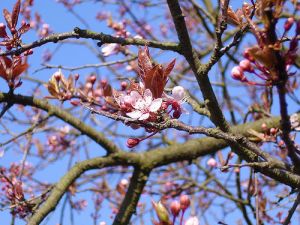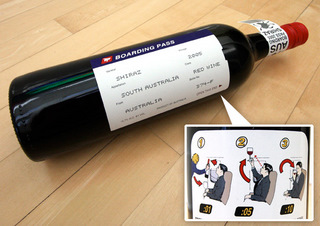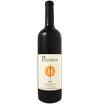Spring is in the air — literally. A couple of weeks ago, as the season was just beginning to take hold, I got very sick. The culprit? Pollen. Outside my house, the shop where I work, in every parking lot and on every curbside was pollen, piled upon itself until it resembled yellow snowdrifts. The arrival of Spring can be an assault on the olfactory sense, but it’s this most aromatic time of year that makes perhaps the strongest argument for being a seasonal wine drinker, someone who matches the wines that they drink to the seasons.
We are all guilty, occasionally or often, of reaching for our perennial favorite wines without regard for the weather, dinner companion, or food pairing. This is not a crime. We like what we like. However, there are certain events that seem to warrant a wine choice to match — birthdays, anniversaries, picnics, etc. I believe Spring is one of these occasions, too. When gray and rainy winter finally gives way to daffodils and poppies and birdsong and sunshine our senses are awakened and refreshed. It’s a great time to expand your sipping horizons with a few unusual, aromatic whites, which as a category, offers the perfect pairing with Spring’s vibrant bouquet. Go ahead, take a chance on one of these:
(Prices are approximate. Importer’s name is in parentheses where applicable.)
2009 Bedrock Wine Co. Compagni Portis Vineyard Heirloom White, Sonoma County, CA, $20
A truly unique and unusual field blend of Gewürztraminer, Riesling, Trousseau Gris, Berger, and some others, this wine is bursting with spicy floral notes. Don’t let the blend of grapes scare you, this is not a sweet wine. Rather, it is crisp (due to vinification in stainless steel), devoid of residual sugar, and has a beautifully silky texture.
2008 Patricius Tokaji Furmint, Hungary, $18 (Blue Danube Wine Company)
Tokaji? Isn’t that a dessert wine? Well, yes, but not in this case. Tokaji is the name given to wines that come from the region of Tokaj-Hegyalja in Hungary. The grape variety is Furmint, which can be made sweet or dry. We’re dealing with the latter in this wine that is a super-fragrant fruit basket. It’s redolent of fresh pear, lime, mango, and a little peach all sprinkled with a touch of spicy cinnamon. Mouthwatering.
2008 Luis Pato Maria Gomes, Bairrada, Portugal, $16 (Vinos Unico)
Sounds like a person, but Maria Gomes is actually a grape variety, albeit one most have never heard of. Sort of like Grüner Veltliner crossed with Muscadet, it has both a peppery, mineral streak and a creamy lemon-grapefruit quality that is at once crisp, refreshing, and complex. Delish with fish.
2009 Crios de Susana Balbo Torrontes, Cafayate, Argentina, $12 (Vine Connections)
This wine is so floral, you’d swear you just stuck your nose in a bouquet of fresh lavender and not a wine glass. On top of that, there are flavors like peach, Bartlett pear, and tangerine. And, it’s all backed by great acidity, which makes the wine feel very fresh and light. Almost no grape is quite as perfect a fit with Springtime as Torrontes.
2008 Coronica Malvasia, Istria, Croatia, $20 (Blue Danube Wine Company)
From a part of Croatia that is characterized by its colorful green hillsides, spotted here and there with blossoms and olive trees, this wine says, “go outside and roll around in the grass.” Round and soft with aromas and flavors of peach blossom and apricot, this wine is light, but manages to have a pleasant (but not heavy) creamy texture at the same time. Like Spanish Albariño with an Eastern European accent.

 Welcome to
Welcome to 


